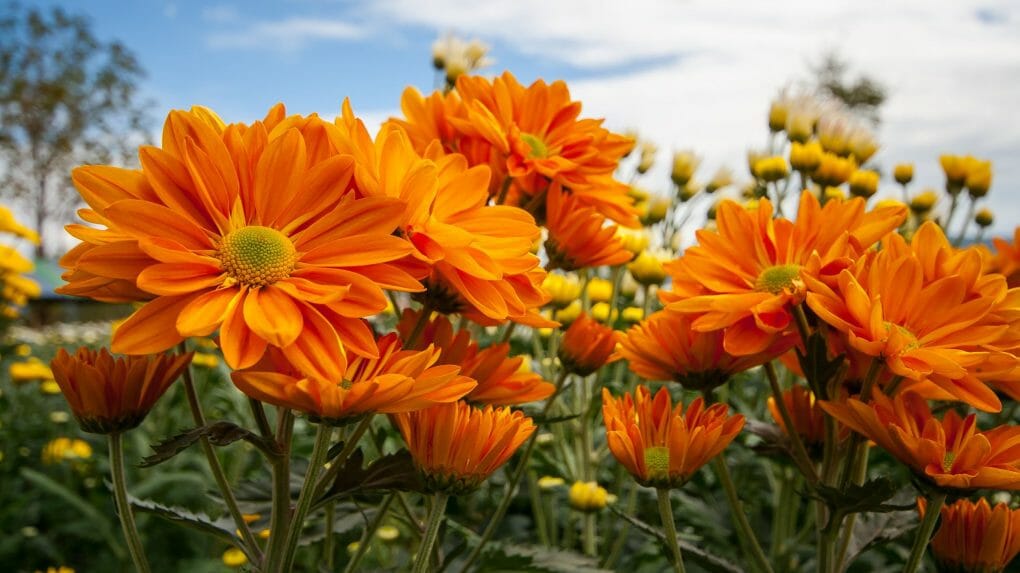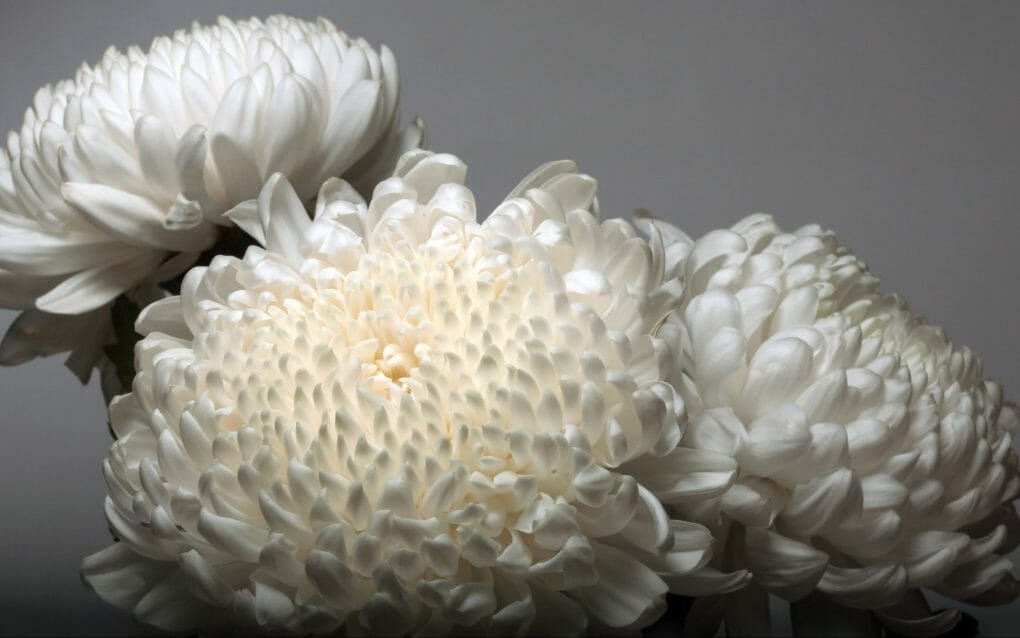Why Are My Chrysanthemums Wilting? Know the 4 Common Causes
One of the most common reasons why chrysanthemums are wilting is that they are not getting enough water. When you plant them, be sure to give them plenty of water and then continue to water them as needed throughout the growing process. Try watering your chrysanthemums in the morning or at night when it’s cooler out so that they don’t get overheated.

Chrysanthemums are a type of flower that typically go through a wilting process in late autumn or early winter. This is due to the changing weather conditions, which lead to reduced water availability and higher temperatures than usual. By mid-winter, most chrysanthemums will have recovered and bloomed again.
If you live in an area where winters are milder than average, your plants may not experience the wilting phenomenon at all. In these cases, it’s likely that something else is causing your flowers to wilt – like insect damage or poor soil quality. If this is the case, fixing the fundamental problem ought to solve the chrysanthemum issue as well.
Table of Contents
4 Common Causes of Chrysanthemum Wilting
Overwatering and Underwatering
Chrysanthemums do best when they receive regular water, but don’t overwater them. When the soil is wet, it’s difficult for the plants to absorb sunlight and water. Overwatering can also lead to root rot and other plant problems.
When watering your chrysanthemums, aim to saturate the ground but refrain from watering so heavily that you create pools of water on top of the soil. Try sprinkling a little bit of water onto your hand and then letting it drip off – this will help you judge how much moisture your plants need.
Underwatering is another common issue that can lead to chrysanthemum wilting. When the soil stays dry for too long, it becomes hard and brittle. This makes it difficult for the plants to take up water and nutrients, which can cause them to wilt.
To avoid this problem, make sure your chrysanthemums have enough water by checking the soil regularly and adding moisture as needed – but don’t overwater them!
Too Much Sunlight Exposure
Too much sunlight can lead to wilting from the intense heat. Over time, this might cause the lower leaves of your chrysanthemums to turn brown and die. To protect them from too much sun, Shade your plants with tall trees or other nearby objects during the early morning and late afternoon hours.
Poor Soil Quality and Nutrients
One of the main reasons why chrysanthemums wilted is because the soil was poorly drained or didn’t have enough nutrients, to begin with. Over time, depleted soils can become waterlogged and cause plants to suffer from various problems, including wilting.
To help improve your chrysanthemum’s soil quality, try adding organic matter – such as compost or leaves – and mixing in plenty of earthworms. These creatures help break down existing bacterial colonies and release vital nutrients into the ground.
Fusarium Wilt
Fungi known as Fusarium oxysporum f. sp. chrysanthemi and F. oxysporum f. sp. tracheiphilum are responsible for the disease known as fusarium wilt.
The fungi are both soil and plant-dwellers. When a plant is infected, the xylem becomes clogged with spores, blocking the flow of water. The wilt implied by the disease’s name is a direct result of this.
Wilting is a common symptom that can have many different causes, from lack of water to root rot, but in the case of fusarium wilt, only half of the plant wilts. The roots of a mum infected with this disease will appear healthy and normal upon excavation.
If the temperature is above 75°F (24°C) and the humidity is high, the fungi will flourish. Infected mums will wilt and their leaves will turn yellow and brown due to the fungus. Overall, the plant will be stunted, and no new buds or leaves will form. It’s possible that the disease will only affect a single stem while the rest of the plant remains healthy, or it could wipe out an entire side of the plant. Check for possible sunken lesions at the stem bases. If you dig around the crown, you might find some red or pink streaks, and the stems and leaves could have some orange or red fruiting bodies.
It’s difficult to find an effective treatment for this illness. Some choose to pre-treat plants in an effort to ward off the disease, but this strategy has limited success. A more effective method would be to implement cultural norms.
Soil from tools like rakes, shovels, and pots can spread the fungi. It’s important to clean dishes and cooking utensils after each use. If you want to disinfect your tools, you can use Lysol, a solution of one part bleach to nine parts water, or just soap and hot water.
These pathogens can also spread through water, so take care not to splash your plants and to water your mums only at ground level.

Since the fungi prefer soil with a pH between 6.5 and 7.0, changing the acidity or alkalinity of your soil may be an effective strategy for eradicating the disease. Alternatively, you could just plant in containers with sterile potting soil to reduce the likelihood of dealing with the fungi.
You should never bring home a plant that has visible signs of disease, but you should also know that pathogens can hide in the plant for a long time before causing symptoms.
This disease only affects mums because it is caused by a strain of the Fusarium oxysporum fungus that can only be found on mums. Avoiding planting chrysanthemums for a year or two won’t help, though, because the fungus can persist in the soil for years.
F. oxysporum f. sp. tracheiphilum, the second fungus we mentioned, can also infect cowpeas, soybeans, and other legumes.
You shouldn’t plant these vegetables there, either, because you probably won’t be able to tell which strain of the pathogen is causing damage.
In the case of microorganisms like fungi and bacteria, the term “strain” simply refers to a distinct genetic variation.
Fungicides might help, but if it’s not a particularly valuable plant, it’s best to just pull it and wait at least five and preferably ten years before planting mums there again. Perhaps you should spend some time learning about the benefits of growing marigolds.
The fungi that cause fusarium wilt are terrible because they can live in the soil for a long time even without a living plant host, and we don’t have very many good treatments for it yet. However, this difficulty need not result in the loss of our beloved mothers.
Reviving Wilted Chrysanthemums
Mums that have wilted can be saved by giving them a good soaking. Usually when the soil is wet again, they start to recover.
Mums that have wilted can be revived by submerging them in a tub filled with water. Your mums can get all the water they need by simply being watered from the bottom. After 2 or 3 hours in the water, remove the pot and set it on a draining rack.
Reviving your mums with a little extra water won’t hurt either. Water them deeply enough that the water runs out of the drainage holes in the bottom of the pot.
Water
When growing water mums in containers, they require regular watering. Mums planted directly into the ground have a lower watering frequency requirement.
Mums in containers need to be watered every other day, on average. The daily temperature, humidity, and sunlight will all affect how often you need to water your mums.
Daily checks to see if they need water may be necessary if you live in a very hot, dry climate. In a cooler climate, you may only need to water them every third or fourth day.
When mums in a pot need watering, you can tell. If you doubt me, pick up the pot and try to balance it. Whenever you notice a floaty sensation, you know that your moms need to be watered. You can wait a while before watering if the pot still has some heft to it.
Deadhead Your Chrysanthemums
Don’t stop removing your mum’s spent blooms. If you do this, the plant will continue to bloom. For mums, flowering is sacrificed for seed production. Deadheading, although time-consuming, is necessary to maintain healthy, beautiful mums throughout the growing season.
See to It That They Get Sufficient Sunlight
It’s important to reposition your potted mums throughout the year to ensure they always face the direction in which the sun is shining, as the angle of the sun shifts and the days get shorter as the seasons progress. It’s important to give your mums at least four hours of sunlight every day. This will ensure that they continue to flourish and look bright.
